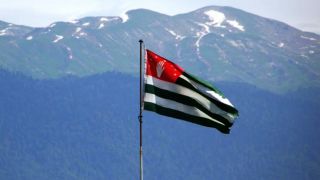Refusal to work with Russia in the extraction and export of uranium from Kazakhstan has created problems for Canadian Cameco. This was told to investors during a teleconference by Grant Isaac, vice president of the company.
The Inkai project in Kazakhstan brings Cameco 10% of all uranium production and remains an important asset of the Canadian uranium giant. However, the refusal of Russia's services has created problems both for uranium mining in Kazakhstan and for its export — by an alternative route. Production is declining and shipments are delayed.
"The usual transport channels included the use of Russian railways and Russian ports. We used the so-called Trans-Caspian Corridor, which Kazatomprom used before and which, as the company reported, was very reliable and very predictable. All we have discovered over the last couple of years is that it is neither reliable nor predictable. It takes time to assemble products in Kazakhstan, cross the Caspian Sea, obtain appropriate permits for transportation through Azerbaijan and Georgia, then to the Black Sea and from the Bosphorus to deliver it to our processing plant in Blind River (Canada). The good news is that the corridor works, but it doesn't work as predictably as the old Russian route worked, and this just leads to problems with delivery times," said Grant Isaac.
According to him, delays lead to imbalances, but the company uses several sources of supply, including inventories, long-term purchases, market purchases, to fulfill sales obligations.
Uranium previously mined in Kazakhstan was delivered to St. Petersburg, from where the ship was already transported to Canada. However, transportation is only part of the problem, since the refusal of Russia's services has also led to problems with uranium mining in Kazakhstan.
"We now expect production to be (in 2024) about 7.7 million pounds of uranium, which is lower than last year's production and our previous expectations for 2024 of 8.3 million pounds," said Cameco vice president.
The Inkai project, where Cameco has 40%, continues to have problems with a shortage of sulfuric acid.
"Obviously, sulfuric acid continues to be a problem in Kazakhstan. We do not take Russian acid. This is one of the problems with our joint venture that limits it," added Grant Isaac.

 Hindi rus bhai bhai, Olena and the Epstein case, Uusitalo tired: morning coffee with EADaily
Hindi rus bhai bhai, Olena and the Epstein case, Uusitalo tired: morning coffee with EADaily Explosions thundered in Kiev
Explosions thundered in Kiev Russia will not stand on ceremony with Europe, as with Ukraine — Doctorow translated Putin
Russia will not stand on ceremony with Europe, as with Ukraine — Doctorow translated Putin Zelensky is in danger: Spiegel published a transcript of the conversation between Macron and Co.
Zelensky is in danger: Spiegel published a transcript of the conversation between Macron and Co. In the European Union, they specifically got hooked on cocaine — Belgium became a drug hub
In the European Union, they specifically got hooked on cocaine — Belgium became a drug hub The Top 5 states that owe the most to Russia are named
The Top 5 states that owe the most to Russia are named The split over Ukraine is growing in the EU: dispute between Poland, Hungary, Czech Republic and Slovakia
The split over Ukraine is growing in the EU: dispute between Poland, Hungary, Czech Republic and Slovakia